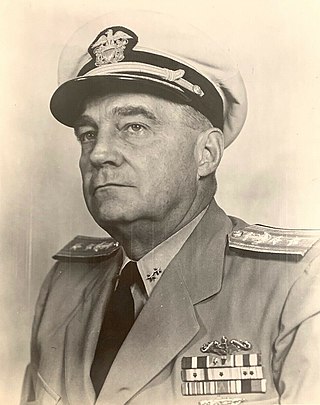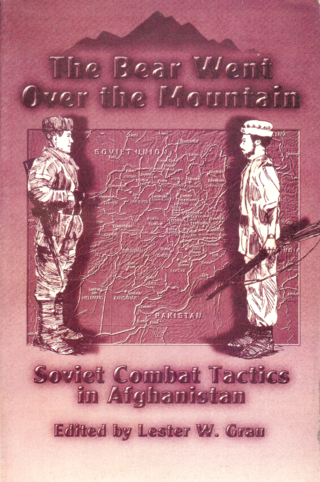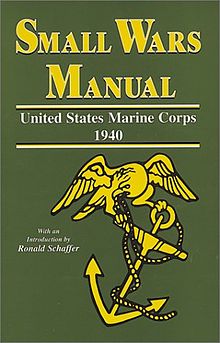
Guerrilla warfare is a form of unconventional warfare in which small groups of irregular military, such as rebels, partisans, paramilitary personnel or armed civilians including recruited children, use ambushes, sabotage, terrorism, raids, petty warfare or hit-and-run tactics in a rebellion, in a violent conflict, in a war or in a civil war to fight against regular military, police or rival insurgent forces.
Military doctrine is the expression of how military forces contribute to campaigns, major operations, battles, and engagements. A military doctrine outlines what military means should be used, how forces should be structured, where forces should be deployed, and the modes of cooperation between types of forces. "Joint doctrine" refers to the doctrines shared and aligned by multinational forces or joint service operations.

A fireteam or fire team is a small modern military subordinated element of infantry designed to optimize "NCO initiative", "combined arms", "bounding overwatch" and "fire and movement" tactical doctrine in combat. Depending on mission requirements, a typical "standard" fireteam consists of four or fewer members: an automatic rifleman, a grenadier, a rifleman, and a designated fireteam leader. The role of each fireteam leader is to ensure that the fireteam operates as a cohesive unit. Two or three fireteams are organized into a section or squad in co-ordinated operations, which is led by a squad leader.

Unconventional warfare (UW) is broadly defined as "military and quasi-military operations other than conventional warfare" and may use covert forces or actions such as subversion, sabotage, espionage, biowarfare, sanctions, propaganda or guerrilla warfare. This is typically done to avoid escalation into conventional warfare as well as international conventions.

Jungle warfare or woodland warfare is warfare in forests, jungles, or similar environments. The term encompasses military operations affected by the terrain, climate, vegetation, and wildlife of densely-wooded areas, as well as the strategies and tactics used by military forces in these situations and environments.

In the field of military theory, the operational level of war represents the level of command that connects the details of tactics with the goals of strategy.

Desert warfare is warfare in deserts or similar arid or semi-arid environments. The term encompasses military operations affected by the terrain, climate, and resource availability of these areas, as well as the strategies and tactics used by military forces in these situations and environments.

Counterinsurgency is "the totality of actions aimed at defeating irregular forces". The Oxford English Dictionary defines counterinsurgency as any "military or political action taken against the activities of guerrillas or revolutionaries" and can be considered war by a state against a non-state adversary. Insurgency and counterinsurgency campaigns have been waged since ancient history. However, modern thinking on counterinsurgency was developed during decolonization.
Mission-type tactics is a method of command and delegation where the military commander gives subordinate leaders a clearly-defined objective, high-level details such as a timeframe, and the forces needed to accomplish that objective. The subordinate leaders are given the planning initiative and freedom of execution: they decide on the methods to achieve the objective independently. This allows a high degree of flexibility at the operational and tactical levels of command, which allows for faster decision-making on the ground and frees the higher leadership from managing the tactical details to concentrate on the strategic picture. This may be contrasted with "Befehlstaktik" or command-type tactics.
Colonial war is a blanket term relating to the various conflicts that arose as the result of overseas territories being settled by foreign powers creating a colony. The term especially refers to wars fought during the nineteenth century between European armies in Africa and Asia.

John Herbert "Babe" Brown, Jr. was a decorated officer in the United States Navy with the rank of Vice admiral during World War II and an American football player. A graduate of the United States Naval Academy, Brown trained as submariner and served successively as Commander, Submarine Squadron 4 and Commander Training Command, Submarine Force, Pacific Fleet in the opening years of World War II. Brown was then promoted to Rear admiral and commanded Cruiser Division One during the bombardment of Japan in summer 1945.

John Walter Wilcox Jr. was a rear admiral of the United States Navy. He saw service in World War I and in the opening weeks of United States involvement in World War II before being lost overboard from his flagship in the North Atlantic Ocean in 1942.

The United States Marine Forces, South, headquartered in New Orleans, Louisiana, is the Marine Corps service component of the United States Southern Command.
In US military doctrine, unconventional warfare is one of the core activities of irregular warfare. Unconventional warfare is essentially support provided by the military to a foreign insurgency or resistance. The legal definition of UW is:
Unconventional Warfare consists of activities conducted to enable a resistance movement or insurgency to coerce, disrupt or overthrow an occupying power or government by operating through or with an underground, auxiliary or guerrilla force in a denied area.
The Fleet Landing Exercises, or FLEX were amphibious landing exercises conducted by the United States Navy and United States Marine Corps between 1935 and 1941. The purpose of these exercises was to formulate a workable amphibious warfare doctrine. The development of the necessary craft and other equipment, and the proper tactical deployment of them were also results. Finally, the exercises demonstrated the usefulness of a standing body of Marines, the Fleet Marine Force, specially prepared for amphibious expeditions.

Brigadier General Dion Williams was an officer in the United States Marine Corps. He was the sixth assistant commandant of the Marine Corps from August 1, 1925 – July 1, 1928. During his early career, Williams pioneered the first conceptual study of amphibious reconnaissance in the United States and becoming one of the strongest advocates in having the Marine Corps assume the amphibious, expeditionary role. During his career, he fought guerrillas in the Philippines and Dominican Republic during the Spanish–American War.

Russell William Volckmann was a graduate of the United States Military Academy at West Point, a U.S. Army infantry officer and a leader of the Philippine Commonwealth military and guerrilla resistance to the Japanese conquest of the Philippines during World War II. After the war, he remained in the U.S. Army and helped create the U.S. Army Special Forces. Volckmann, together with Colonels Aaron Bank and Wendell Fertig are considered the founders of the U.S. Army Special Forces. He eventually retired as a brigadier general.

Stuart Howe Ingersoll was a vice admiral of the United States Navy. He was a naval aviator whose career included service as an aircraft carrier commander during World War II and tours as commander-in-chief of the United States Seventh Fleet, President of the Naval War College, and Commandant of Midshipmen at the United States Naval Academy.
Major-General Sir Charles Edward Callwell, was an Anglo-Irish officer of the British Army, who served in the artillery, as an intelligence officer, and as a staff officer and commander during the Second Boer War, and as Director of Operations & Intelligence during World War I. He was also a noted writer of military biography, history, and theory.

The Bear Went Over the Mountain: Soviet Combat Tactics in Afghanistan is a 1996 non-fiction book translated and edited by American military scholar and author Lester W. Grau. The book is translated from a study initially published by the Frunze Military Academy in 1991 titled "Combat Actions of Soviet Forces in the Republic of Afghanistan" and subtitled "A Thematic Collection of Tactical Examples." Grau received the original Russian language text from the Department of the History of the Military Art at the Frunze academy. With their permission he translated, included commentary, and published his results as this book.















